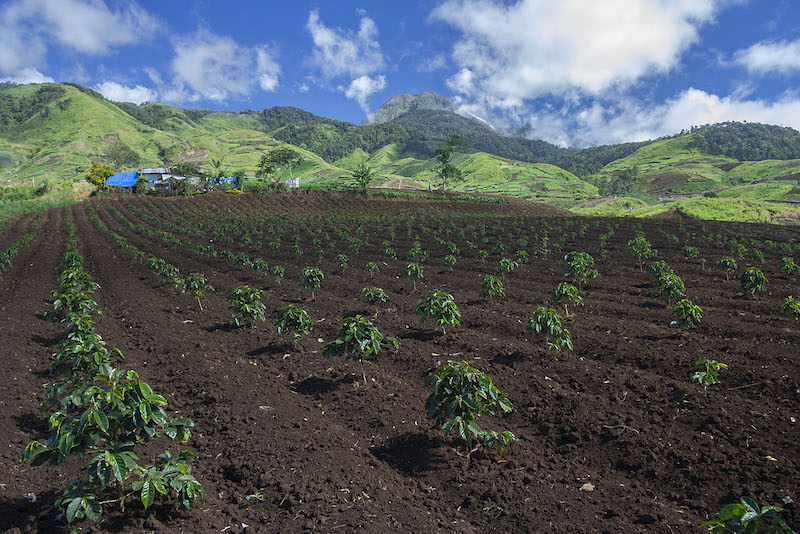ILIGAN CITY (MindaNews / 26 May) – Coffees from hinterland villages in the municipality of Bansalan at the foot of Mt. Apo in Davao del Sur dominated the Philippine Coffee Quality Competition (PCQC) 2021, winning the top three places in the Arabica category and two more honorable mentions.
The winning entries in this year’s contest were announced via a Zoom meeting and livestreamed over Facebook Wednesday morning. Marites Arellano of Balutakay in Barangay Managa, Bansalan won the first place. Second was Lendilou Loon of Sitio Mahayahay in Barangay Alegre, a neighboring village, while the third was Jastine Mae Dubria, also of Balutakay.

The fourth and sixth placers, Marifel dela Cerna and Maria Luz Dubria, respectively, are from Balutakay as well. Only the fifth placer – George Dapliya – is not from Bansalan. Dapliya is from Sagada in the Mountain Province.
Arellano’s entry, which garnered a score of 85.86, was described by organizers as having “peach, guava, chocolate, apricot [and] almond” notes.
“This is a very gentle coffee, quite a fruit bomb,” said head judge Shaun Ong, of Bettr Barista Coffee Academy in Singapore. He added that this “phenomenal coffee” is quite different from the typical Philippine coffee with spice, nutty and tobacco flavors.
The winning entry was a “natural” or “dry process” coffee, which is the old method of drying the cherries with the pulp still intact instead of being washed and depulped before drying. It is of the catimor variety and grown at an altitude of 1,560 meters above sea level.
Marivic Dubria, chair of the Balutakay Coffee Farmers’ Association (BACOFA) and winner in the PCQC 2019, told MindaNews the help they got from government agencies like the Department of Agriculture and Department of Trade and Industry, as well as from the coffee experts from the Philippine Coffee Advancement and Farm Enterprise (PhilCAFE) project of the development organization ACDI/VOCA, have improved the quality of their coffee in the past few years.
“We appreciate the trainings and seminars introducing new technology to us farmers. Otherwise, we could have stuck to the old practices that led us nowhere,” said Dubria, who was sent to Seattle in the United States to attend a coffee fair for winning the local competition two years ago.
Her daughter Jastine Mae placed third in this year’s contest, while sister-in-law Maria Luz was sixth.
The Robusta category, meanwhile, was dominated by farmers from Ilocos Sur, getting all the top five places. A farmer from Pangantucan in Bukidnon placed sixth.
First place went to Mabini C. Ubuan, of the municipality of Sigay, whose coffee was described as having notes of “cherry, almond, caramel, dark chocolate, dates and prunes.”
Cherry Cruz, chair of the technical working group of the PCQC 2021, said it was the best Robusta coffee she has tasted in the local competitions the past four years with “sweetness and complexity pretty much like an Arabica coffee.”
Second placer was Mariell M. Gannad, of Gregorio del Pilar town, while third was Erlinda Dao-ayan, of the same place.
Cruz said 103 entries were submitted, the most attended so far. Thirty-one of the entries were Arabica, 69 Robusta and three Excelsa.
Arabica is regarded as the best among the four common types of coffee with the most production in the world. It is more difficult to farm as it requires higher elevation and colder climate. The second most produced coffee is Robusta, and usually easier to farm as they can grow in lower altitudes and warmer climates. Excelsa and Liberica (locally known as “barako”) are far less common coffees.
Farmers from 12 regions joined the competition: 14 from the Cordillera Administrative Region; 13 from the Ilocos Region; 11 from Cagayan Valley; three from Central Luzon; one from Calabarzon; eight from Western Visayas; five from Central Visayas; one from Zamboanga Peninsula;16 each from Northern Mindanao and Davao regions;, 13 from Soccsksargen; and two from Caraga.
Mindanao submitted the most entries at 48, followed by Luzon at 42 and Visayas, 13.
Cruz said it was a challenge holding the contest amid the pandemic as they had to send the samples to the judges instead of gather in one place. Last year’s competition was cancelled because of COVID-19. (Bobby Timonera / MindaNews)






